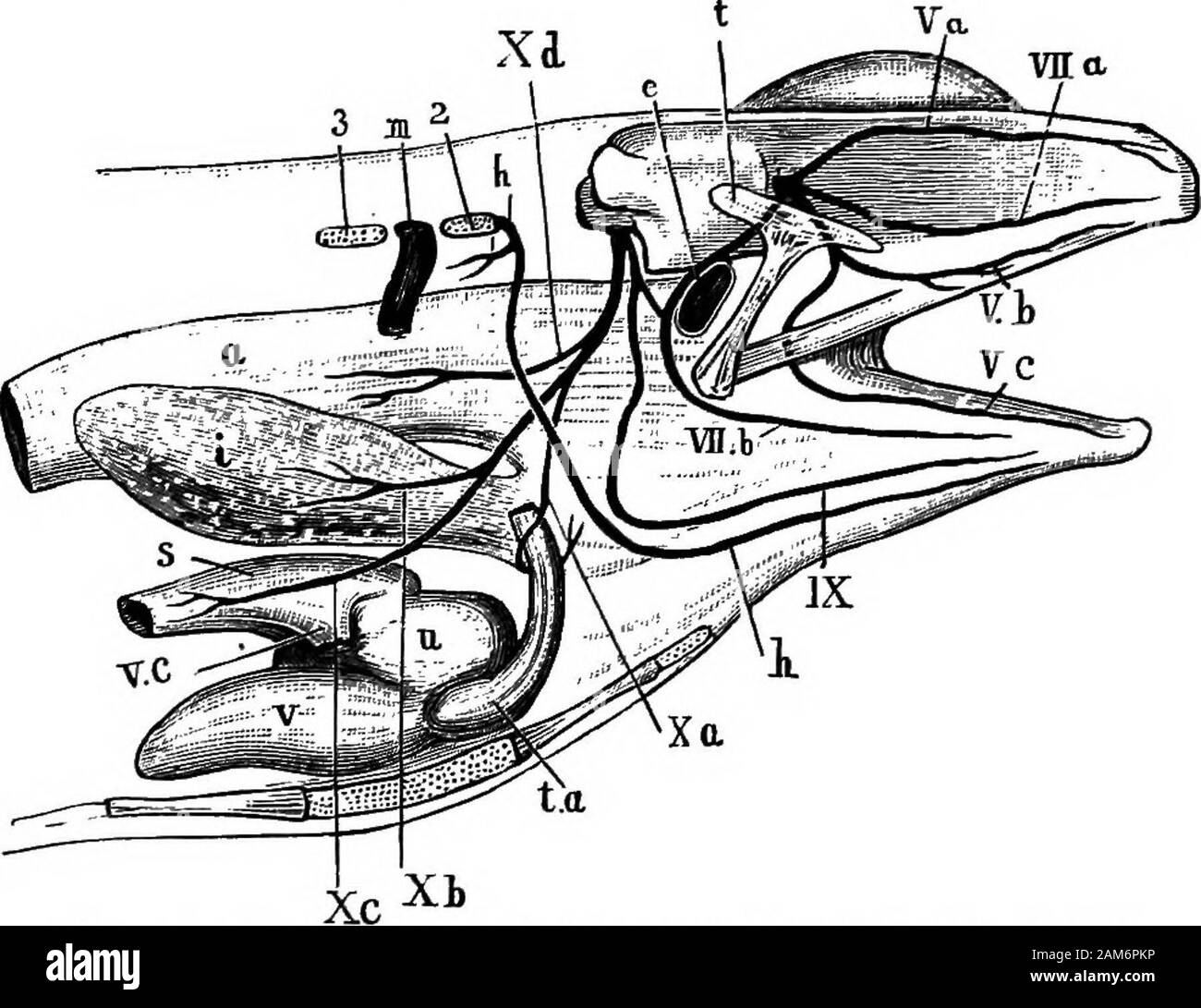The frog: an introduction to anatomy, histology, and embryology . ly from thethird, fourth, and fifth ganglia.Hepatic, renal, genital, haemorrhoidal, and vesical plexusesalso exist in connection with the liver, kidney, reproductiveorgans, large intestine, and bladder respectively. III. The Cranial Nerves. There are ten paiis of cranialnerves in the frog, which are numbered in order from beforebackwards. (See Figs. 12, 14 and 16.) 78 THE NERVOUS SYSTEM OF THE FROG To dissect the cranial nerves expose the brain by removing theroof of the shvM as al/ready described, amd then follow the specialins

Image details
Contributor:
The Reading Room / Alamy Stock PhotoImage ID:
2AM6PKPFile size:
7.1 MB (358.5 KB Compressed download)Releases:
Model - no | Property - noDo I need a release?Dimensions:
1800 x 1387 px | 30.5 x 23.5 cm | 12 x 9.2 inches | 150dpiMore information:
This image is a public domain image, which means either that copyright has expired in the image or the copyright holder has waived their copyright. Alamy charges you a fee for access to the high resolution copy of the image.
This image could have imperfections as it’s either historical or reportage.
The frog: an introduction to anatomy, histology, and embryology . ly from thethird, fourth, and fifth ganglia.Hepatic, renal, genital, haemorrhoidal, and vesical plexusesalso exist in connection with the liver, kidney, reproductiveorgans, large intestine, and bladder respectively. III. The Cranial Nerves. There are ten paiis of cranialnerves in the frog, which are numbered in order from beforebackwards. (See Figs. 12, 14 and 16.) 78 THE NERVOUS SYSTEM OF THE FROG To dissect the cranial nerves expose the brain by removing theroof of the shvM as al/ready described, amd then follow the specialinstructions given in the case of the more important nerves. 1. The olfactory nerve, the special nerve of smell, arises from the anterior end and outer side of the olfactorylobe, and is distributed to the membrane lining thenasal cavity. To see the cov/rse a/nd distribution of the olfactory nerve, dissectfrom the dorsal swrface, removing the roof of the anterior part ofthe skuM, including the nasal bone. 2. The optic nerve, the nerve of sight, arises from the side. Fig. i6.—The trigeminal, facial, glossopharyngeal, and pneumo-gastric nerves of the frog, dissected from the right side. a, stomach; e, Eustachian tube; h, hjpoglossal nerve; «, lung;m, second spinal nerve ; s, sinus venosus ; i, squamosal; t.a, truncusarteriosus ; a, right auricle ; v, ventricle ; v.c, right anterior venacava ; Va, ophthalmic branch of trig«;minal; Vb, maxillary branch oftrigeminal; Vc, mandibular branch of the trigeminal; Vila, palatinebranch of facial; Vllb, hyoidean branch of facial; IX, glosso-pharyngeal ; Xa, laryngeal branch of pneumogastric ; Xb, pulmonarybranch of pneumogastric ; Xc, cardiac branch of pneumogastric;Xd, gastric branch of pneumogastric ; 2, transverse process of secondvertebra; 3, transverse process of third vertebra. THE CRAKIAL NEKVBS 79 of the brain just below the optic lobe, partially crossesover at the optic chiasma on the under surface of thebrain, and then runs outward